The Specialized Allez Sprint is the Fastest Bike You're Not Riding
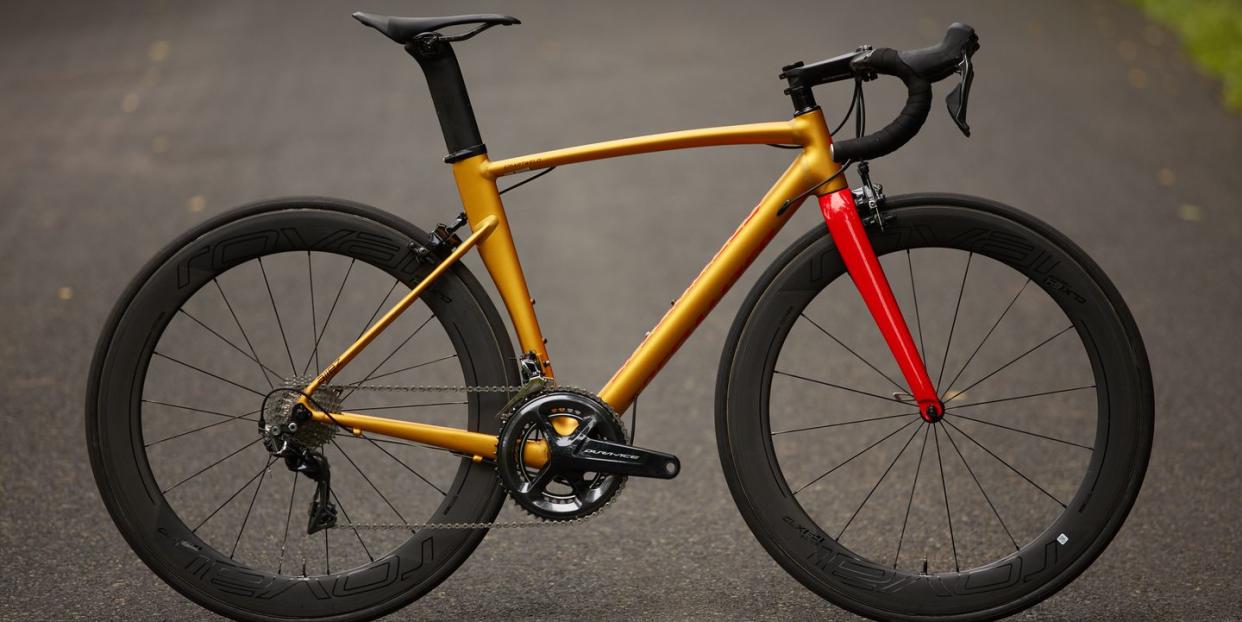
Price (frameset only): $1,200
Use: Road racing, fast group riding, Strava sniping
Drivetrain (as built): Shimano Dura Ace 9100
Frame: Aluminum with full-carbon fork
Tire Clearance: 28mm
Weight: 15.5lbs (size 54, as tested)
The Right Bike For: Riders who put a preference on stiffness and feedback
I'm going to state right up front that the Specialized Allez Sprint is not for everyone. This is an untamed, capital R, race bike, and not like most of the carbon "race" bikes on the market.
Modern carbon race bikes can achieve a combination of low weight, high stiffness, and hushed smoothness that's frankly incredible. And, like most SUV's are never driven off road, most race bikes aren't raced, so many of them–I'd estimated most of the popular ones–aren't extremely low and long, so it's possible to set up a reasonably upright fit without too much effort.
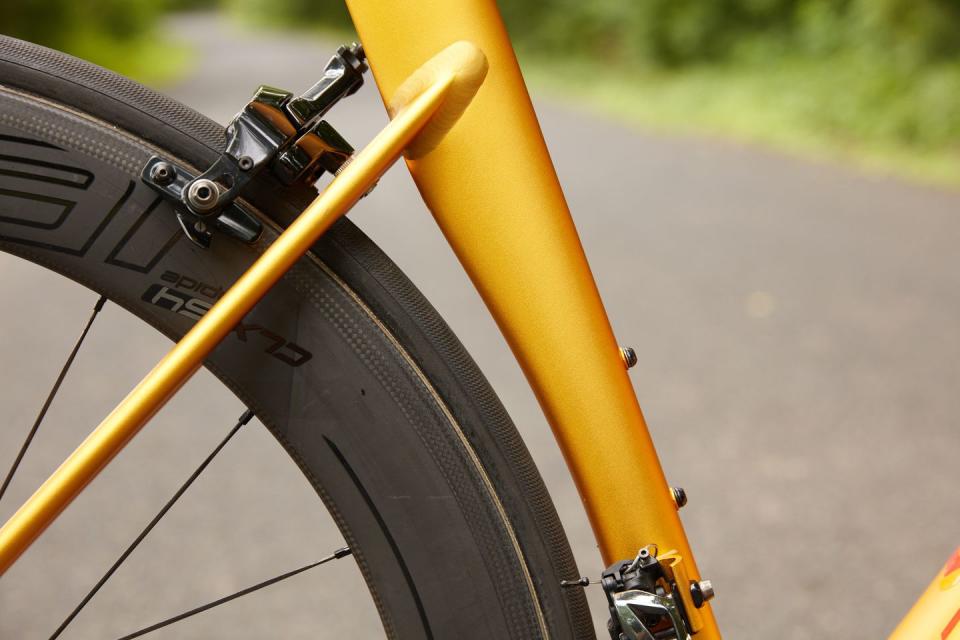
This Allez Sprint though: yowza. It feels like the stiffest road bike I've ever ridden–I'm not sure it is the stiffest bike I've ever ridden ("feels like" is different that "actually is"), but if it isn't one of the top-five stiffest road bikes I've ridden, I'd be very surprised.
It is very communicative: I could probably tell you if I was riding a road covered in fine, or extra-fine, grit sandpaper. It's low: in my size (54cm), the Allez Sprint's stack (533mm) is 11mm lower than a Tarmac's. And it's alive: this thing moves and steers like it has a shorter wheelbase and steeper steering geometry than it does on paper.
And if you like race-proven cred, consider this: Jonathan Brown of the Hagens Berman Axeon team recently soloed to the US National Road Championship aboard an Allez Sprint.
Smartweld Frame
There are many of aluminum road frames in the world. What sets the Allez Sprint apart from all other aluminum frames is the DSW (D'Aluisio Smart Weld) headtube, and its three-piece brazed bottom bracket.
The overarching idea behind the DSW–named for it's creator, Specialized engineer Chris D'Aluisio–headtube is to move the weld zones away from the highest-stressed areas of the frame, so engineers can use less material (less weight, better ride) without sacrificing strength.
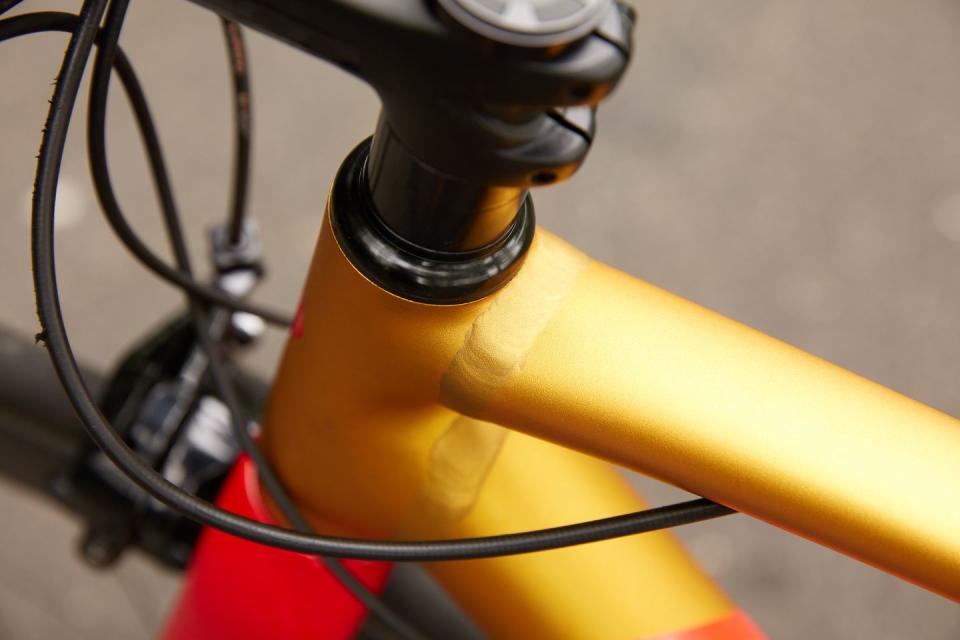
The headtube is hydroformed with nascent top and downtubes, which are mated to the hydroformed top and downtubes. The ends of the headtube's stubs, and the top and downtubes, are domed where they meet, which provides a bit of extra rigidity, but also forms a "V" that provides an easy path for the frame builder to fill with welding material.
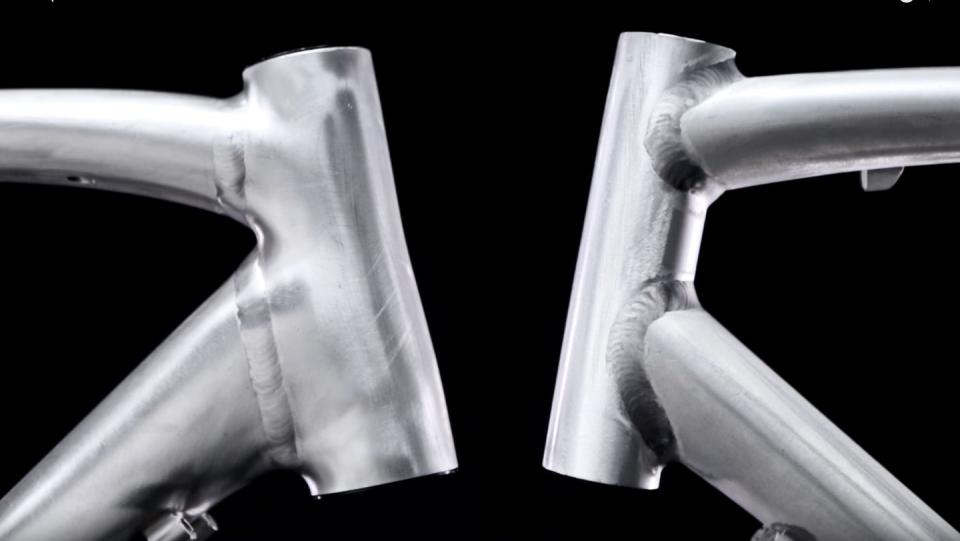
It's a little tough to see the difference even when you look at a side-by-side picture of DSW and traditional welding, but according to Chuck Teixeira, an aluminum guru, and a Specialized senior advanced R&D engineer, it makes a significant difference in the test lab, where the DSW frames proved tougher than a traditionally welded aluminum frame.
Down at the bottom bracket, Teixeira designed a three piece bottom bracket unit. It consists of a BB tube (the frame employs the BB30 standard), and left and right halves that are brazed together–brazing is a lower temperature process than welding, and isn't as damaging to the base aluminum–to form a sizable, and mostly hollow, BB unit.
This part features stub seat and downtubes with domed ends, which are butted against the domed ends of the primary seat and downtube, and then welded like the DSW junctions at the head tube.
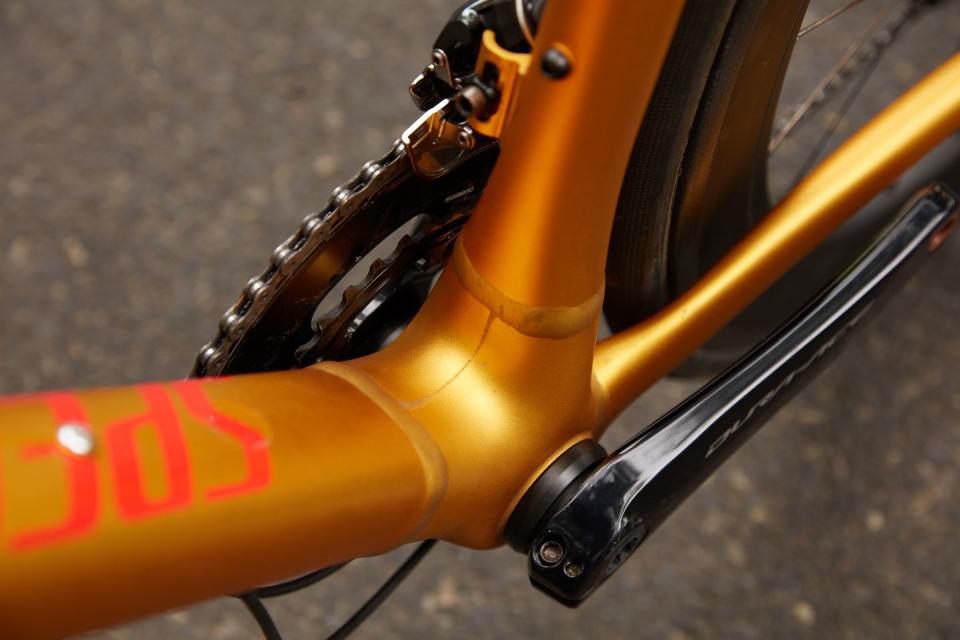
While they were at it, Specialized engineers did some aero work on the Allez Sprint's frame, and claim it's more aerodynamic than the first generation of Specialized's Venge aero road bike. The Allez Sprint was also given the Rider First Engineering treatment, which specialized debuted in the fifth generation Tarmac. Each frame size has unique down tube, bottom bracket shell, head tube, and fork, so riders of every size have the same performance (the small frames aren't to stiff, the big frames aren't too soft).
The Allez Sprint gets its full carbon fork from the fifth-generation S-Works Tarmac, and its carbon seatpost from the second-generation S-Works Venge, so it's a bit of a parts bin special, but they are generally higher-end parts than you'd find on a $1200 frameset or $1800 bike.
The claimed frame weight of 1,150g frame (56cm), isn't ground breaking, even for an aluminum bike. But it's light enough that 15 pound builds are within easy reach; sub 15 is probably achievable also if you really threw the bank account at it.
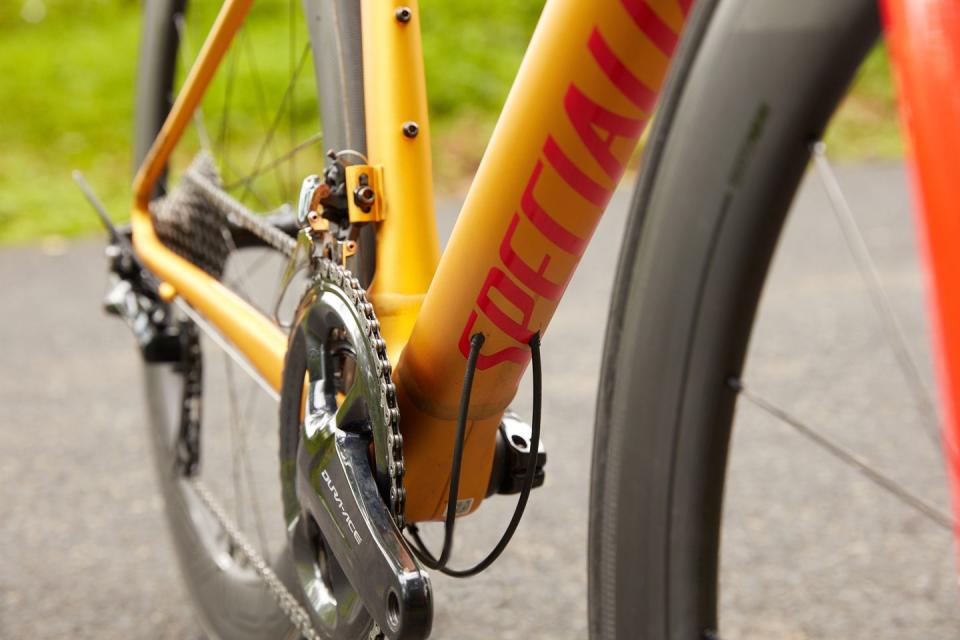
The Allez Sprint is only offered for rim brakes, and comes in six sizes: 49, 52, 54, 56, 58, and 61 centimeter. Tire clearance is surprisingly generous: 28mm tires are an easy fit.
Other than the shorter than average head tubes, the Allez Sprint's geometry is pretty standard American-style (crit influenced) race: chainstays are 405mm, bottom bracket drop is 69mm, and steering geometry is on the quicker side (58mm trail on my 54cm test frame).
Other frame details of note: dropped seat stay attachment, aerodynamic seat tube with cutout, internal routing through main triangle.
The Allez Sprint Family
Specialized sells one complete Allez Sprint: the $1800 Allez Sprint Comp. It's built with Shimano's 105 drivetrain, DT-Swiss aluminum wheels, and a whole bunch of Specialized parts: aluminum stem and handlebar, carbon seatpost, tires, saddle.
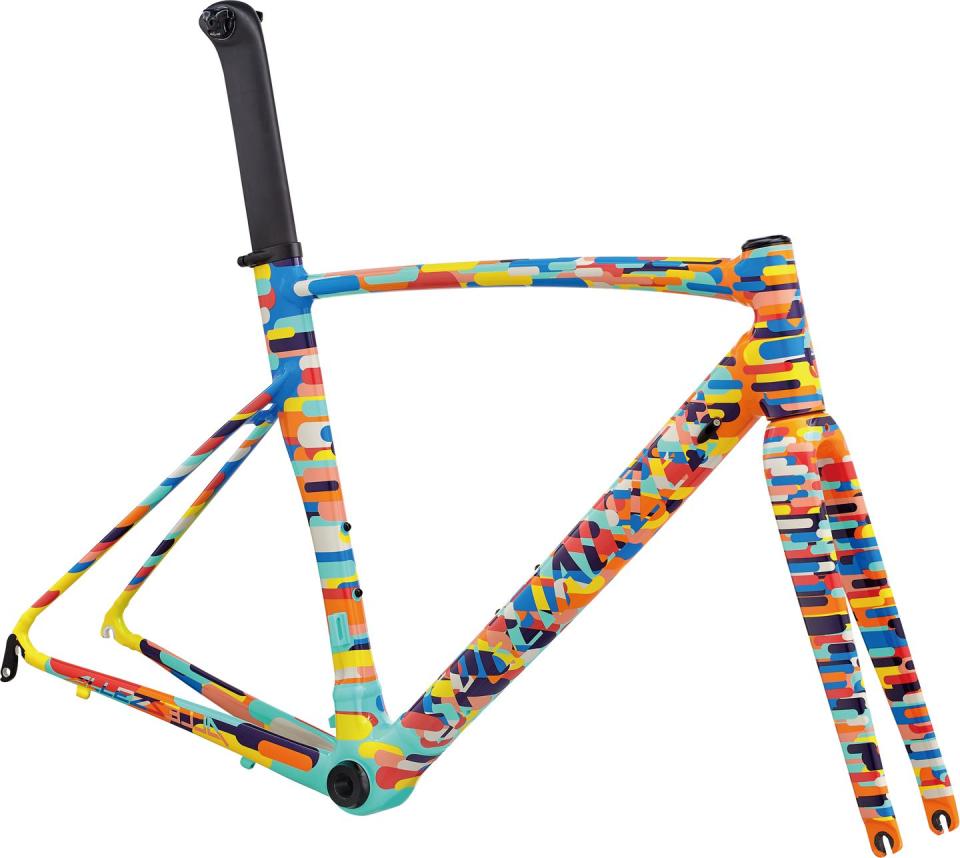
The Allez Sprint is also offered as a frameset in a array of limited edition colors that change frequently (the gold anodized frame with red fork you see here is no longer offered). This was the option I tested, and I built it up in a non-nonsense way that suited its race-oriented focus: Shimano's Dura Ace mechanical group and Roval's CLX 64mm deep tubular wheels shod in 26mm Specialized Turbo All Around tubulars. The complete bike weighed 15.5 pounds.
Note that the Allez Sprint is a completely different frame than the lower-priced Allezmodels.
Riding the Allez Sprint: Full Gaz or Die!
Race bikes used to be wilder: they felt more raw and untamed than today's refined marvels.
That's what's so amazing about carbon: compared to other materials, it allows frame engineers to tune and tune individual qualities with less affect on the others. That's why carbon frames have so many ands: they are light AND stiff AND smooth AND damped AND aerodynamic AND strong AND...
As frame engineers' experience with carbon has increased, they've removed any trace of a rough edge. Today's best carbon frames are a freaking miracle; it's hard to imagine that they can get any better (they will).
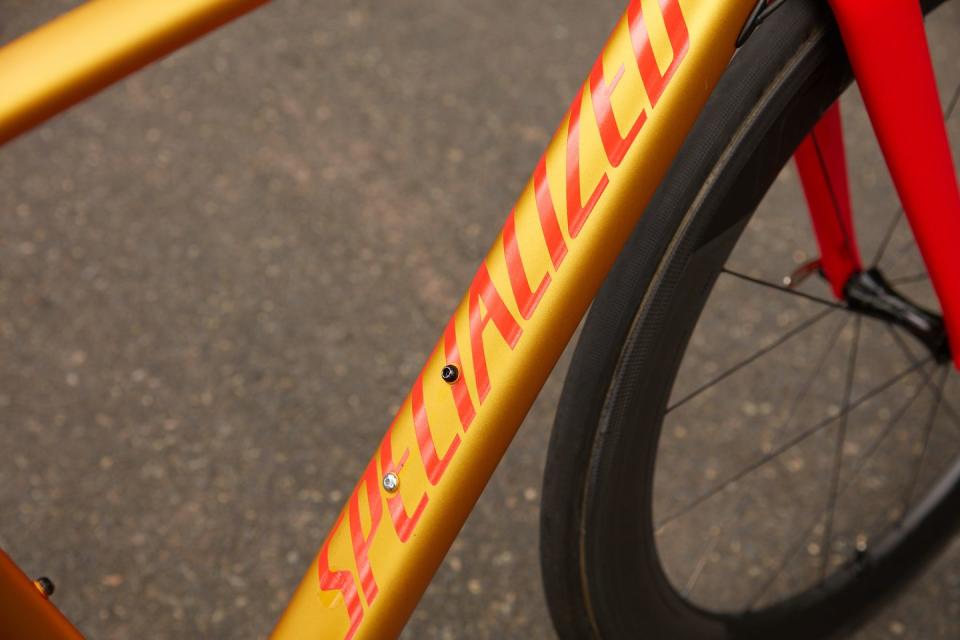
Riding the Allez Sprint is like stepping back in time to when race bikes were rowdy. There is so much to feel: the stiffness, the feedback, the impact of a shift pulsing through the frame; the nuances of the surface you're riding on. This frame doesn't float over the road, it digs down below the surface.
The ride is firm–not punishing or harsh–and there's little yield. For example: several times during testing, bumps caused the Allez's back wheel to kick up off the ground: the same bumps that I had rolled over on carbon bikes without issue. It's a purely vertical stiffness though: the Allez Sprint corners beautifully, and tracks through bumpy corners very well. I consider it one of the best cornering bikes I've ever sampled: not because it actually cornered faster, but because it seemed to provide more easily-processed feedback, so I felt more comfortable pushing it closer to my limit.
Steering is direct and sharp: I've ridden other bikes with very similar geometry–including Specialized Tarmacs and Venges–but the Allez Sprint seemed a little more eager to turn in and change direction.
But that frame stiffness: oh boy. Again, I don't know if it is actually stiffer, or just telegraphs stiffness better than most bikes, but damn does this frame feel solid. There's little sensation of anything giving from the BB shell backwards; the mid-frame and head tube stiffness are also top notch. It feels like a frame for a match sprint specialist.
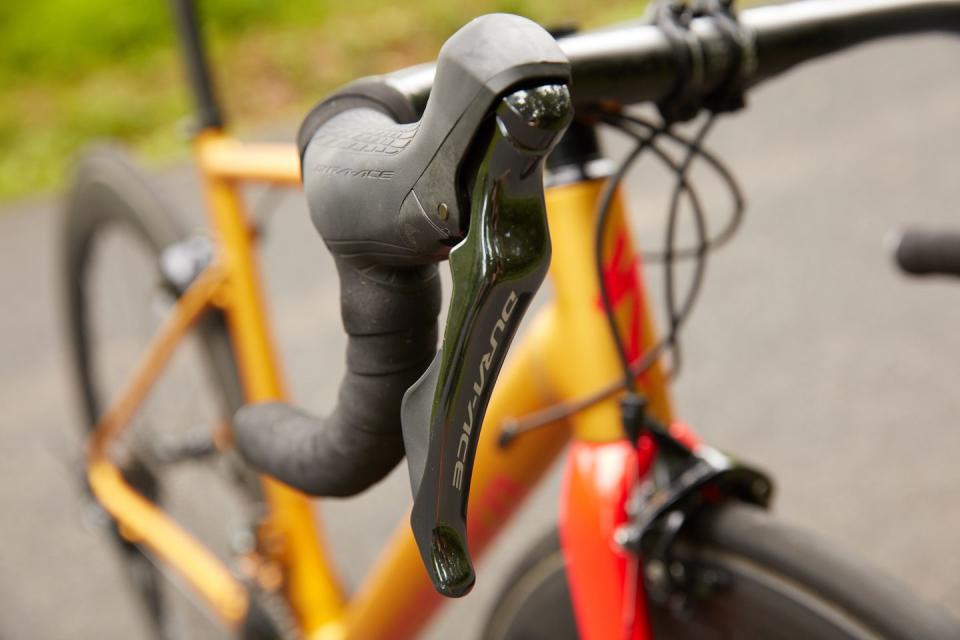
Best of all, it feels fast. It's got pop, it's communicative as hell, and it's a bit aerodynamic too.
This is clearly not a bike for everyone. But it's a great bike for the right rider, particularly someone who's looking for a high performance race bike on a bit of a restricted budget.
The $1800 complete bike is an awesome first race bike, or beater crit racing bike. The aluminum frame doesn't need to be handled as carefully as a carbon bike, and usually can take a bit more punishment than a high end carbon race bike (PSA: all bikes should be handled carefully and taken care of).
The framesets are a pretty great deal for the technology and performance you get, and the limited edition colors truly stand out. With some smart shopping, this frame could be built up into kick-ass race bike with better parts, for less money, than the popular carbon race bikes.
If you're looking for a race bike that's more wild, more fun, and costs less than the popular carbon race bikes, that's the Allez Sprint.
You Might Also Like